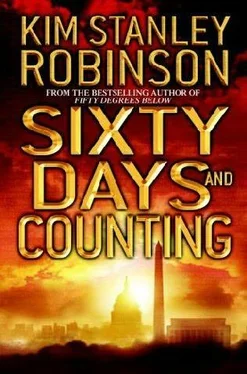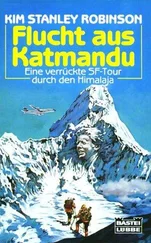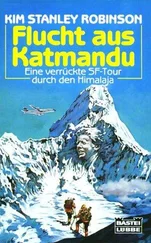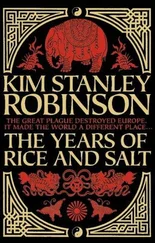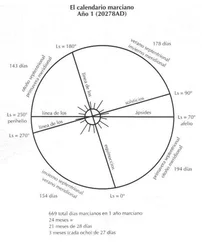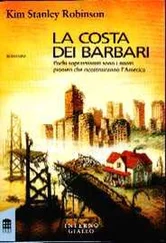“Wow. So it’s like finding Troy, or Thera.”
“Yes, exactly. A very exciting find. And the Chinese so far are being pretty good about it. The dike holding in this part of the new sea has been rerouted to keep the site out of the water. And between the site and the new lake it looks like they are hoping to create a new tourist destination, linked to the Tibet tour. We’re already seeing some Shangri-La hotels and travel companies springing up out here.”
“Amazing,” Frank said. “I wonder if it will catch on.”
“Who knows? But at least we won’t have to hurry to excavate a site that’s going to be drowned. I did that in Turkey, and it’s a terrible experience.”
Frank walked around the site with the man. “How old is it, did you say?”
“Eighth century.”
“And was it founded by a Rudra Cakrin?”
“Yes, that’s right. Very good.”
“But I read that he founded the city in sixteen thousand BC?”
“Yes,” Chung said, laughing, “they do say that, but it’s the same with Plato saying Atlantis was ten thousand years old and a hundred miles across. These stories appear to get exaggerated by a factor of ten.”
“Interesting.” They walked past a big cleared area of the dig. “This was a temple site?”
“Yes, we think so.”
Frank took from his daypack a pill bottle containing some of Rudra’s ashes that Qang had given him. He opened it and cast the fine gray ash into the wind. The little cloud puffed and drifted away onto the ground, more dust to add to all the rest. Maybe it would skew some numbers if they ever did any carbon-14 dating.
“Enough,” Frank said.
———
An Aeroflot flight then, during which he caught sight of the Aral Sea, which apparently was already twice as big as before its own flooding project had begun, thus almost back to the size it had been before people began diverting its inflow a century before. All kinds of landscape-restoration experiments were being conducted by the Kazakhs and Uzbeks around the new shoreline, which they had set legally in advance and which now was almost achieved. From the air the shoreline appeared as a ring of green, then brown, around a lake that was light brown near the shoreline, shading to olive, then a murky dark green, then blue. It looked like a vernal pool.
Later the plane landed and woke Frank with a cacophony of creaks and groans. Frank got off and was greeted by an American and Russian team from Marta and Yann’s old company, Small Delivery Systems. It was cold, and there was a dusting of dirty snow on the ground. Winter in Siberia! Although in fact it was not that cold and seemed rather dry and brown.
They drove off in a caravan of four long gray vans or tall station wagons, something like Soviet Land Rovers, it seemed, creaky like the plane, but warm and stuffy. People were starting to drive them on the frozen rivers again, he was told. Now they progressed over a road that was not paved but did have fresh pea gravel spread over it, and a coating of frost. The vehicles had to keep a certain distance from each other to avoid having their windshields quickly pitted.
Not far from the airport the road led them into a forest of scrubby pines. It looked like Interstate 95 in Maine, except that the road was narrower, and unpaved, and the trees therefore grayed by the dust thrown up by passing traffic. They were somewhere near Cheylabinsk 56, someone said. You don’t want to go there, a Russian added. One of Stalin’s biggest messes. Somewhere southeast of the Urals, Frank saw on a cell-phone map.
Their little caravan stopped in a clearing that included a gravel parking lot and a row of cabins. They got out, and the locals led the rest of them to a broad path leading into the woods. Quickly Frank saw that the roadside dust and frost had obscured the fact that all the trees in this forest had another coating: not dust, but lichen.
It was Small Delivery Systems’ lichen. Frank saw now why Marta had been not exactly boasting, nor abashed, nor exuberant, nor defensive, but some strange mixture of all these. Because she and Eleanor were the team that had engineered this tree lichen for the Russians, manipulating the fungal part of the symbiote so that it would colonize its host trees more quickly, and then alter the lignin balance of the trees in ways that changed their metabolism. Tree lichens had always done that to their hosts for their own purposes, but these did it faster and to a greater extent. The more lignin that got banked in the tree, the better the lichen did, but also the bulkier the root system became, and this increased the net carbon drawdown of individual trees by 7 or 10 percent. Cumulatively, a very big potential drawdown indeed.
And the lichen were obviously doing well, to the point where a balance had clearly been lost. There were forests Frank had seen in Canada where moss or lichen covered most of the trunks and branches. In particular he recalled a frondy, day-glo green moss that in places was very widespread. But this lichen plated everything: trunk, branches, twigs—everything but the pine needles themselves.
Such a thorough cloaking looked harmful. A shaft of sunlight cut through the clouds at an angle and hit some trees nearby, and their cladding of lichen made them gleam like bronze trees with their needles painted green.
The Small Delivery people out there with Frank were sanguine about all this. They did not think there would be a problem. They said the trees were not in danger. They said that even if some trees died, it would only be a bit of negative feedback to counter the carbon drawdown that was already working so well. If a certain percentage of trees also took on lignin so fast they split their trunks, or had roots rupture underground, or others were suffocated by the lichen growing over the budding points of the new needles, then that would slow any further runaway growth of the lichen. Things would then eventually reach a balance.
Frank wasn’t so sure. He did not think this was ecologically sound. Possibly the lichen could go on living on dead trees; certainly it could spread at the borders of the infestation to new trees. But these were not the people to talk to about this possibility.
The new lichen started out khaki, it appeared, and then caked itself with a second layer that was the dull bronze that eventually dominated. Like the cructose lichen of the high Sierra that you saw everywhere on granite, it was quite beautiful. The little bubbles of its surface texture had an insectile sheen. That was the fungus. Frank recalled a passage in Thoreau: “The simplest and most lumpish fungus has a peculiar interest to us, because it is so obviously organic and related to ourselves; matter not dormant, but inspired, a life akin to my own. It is a successful poem in its kind.”
Which was true; but to see it take over the life it was usually symbiotic with was not a good thing. It looked like the parts of Georgia where kudzu had for a time overgrown everything.
“Creepy,” Frank remarked, scraping at an individual bubble with a finger-nail. These were the tiny plutons of a different kind of batholith.
“Yes, it is kind of, isn’t it?”
“How do the roots look?”
“Come see for yourself.” They took him to an area where the soil had been removed from beneath some sample trees. Here they saw both before and after roots, as some trees had been girdled and killed and their roots exposed later, to give them baseline data. Near them some still living trees, or trees in the process of being killed by the root exposure, were standing in holes balanced on their lowest net of fine roots, leaving most of the root balls exposed. The root balls were still shallow, in the way of evergreens, but the lichen-infested trees had roots that were markedly thicker than the uninfested trees.
Читать дальше
Конец ознакомительного отрывка
Купить книгу
